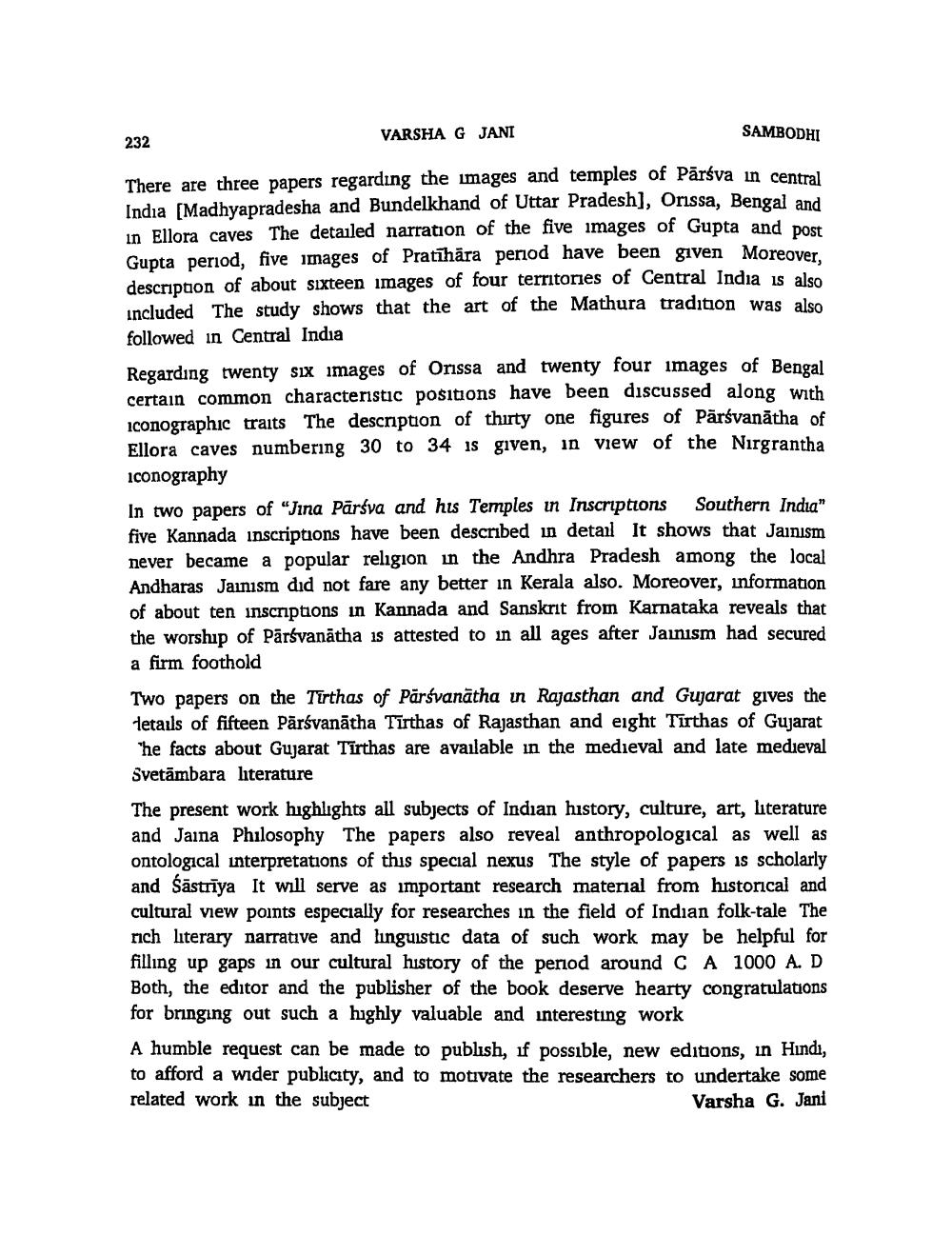________________
SAMBODHI
There are three papers regarding the images and temples of Pärśva in central India [Madhyapradesha and Bundelkhand of Uttar Pradesh], Orissa, Bengal and in Ellora caves The detailed narration of the five images of Gupta and post Gupta period, five images of Pratihāra penod have been given Moreover, description of about sixteen images of four territories of Central India is also included The study shows that the art of the Mathura tradition was also followed in Central India
232
VARSHA G JANI
Regarding twenty six images of Orissa and twenty four images of Bengal certain common characteristic positions have been discussed along with Iconographic traits The description of thirty one figures of Parsvanatha of Ellora caves numbering 30 to 34 is given, in view of the Nirgrantha Iconography
In two papers of "Jina Päriva and his Temples in Inscriptions Southern India" five Kannada inscriptions have been described in detail It shows that Jainism never became a popular religion in the Andhra Pradesh among the local Andharas Jainism did not fare any better in Kerala also. Moreover, information of about ten inscriptions in Kannada and Sanskrit from Karnataka reveals that the worship of Pärsvanatha is attested to in all ages after Jainism had secured a firm foothold
Two papers on the Tirthas of Parsvanatha in Rajasthan and Gujarat gives the details of fifteen Pärsvanatha Tirthas of Rajasthan and eight Tirthas of Gujarat The facts about Gujarat Tirthas are available in the medieval and late medieval Svetāmbara literature
The present work highlights all subjects of Indian history, culture, art, literature and Jaina Philosophy The papers also reveal anthropological as well as ontological interpretations of this special nexus The style of papers is scholarly and Sastriya It will serve as important research material from historical and cultural view points especially for researches in the field of Indian folk-tale The nch literary narrative and linguistic data of such work may be helpful for filling up gaps in our cultural history of the period around C A 1000 A. D Both, the editor and the publisher of the book deserve hearty congratulations for bringing out such a highly valuable and interesting work
A humble request can be made to publish, if possible, new editions, in Hindi, to afford a wider publicity, and to motivate the researchers to undertake some related work in the subject
Varsha G. Jani




